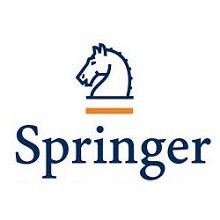
دانلود مقاله سرطان اولیه سر و گردن سنکرون و سرطان مری پسا شیمی درمانی
چکیده
کلید واژه ها
مقدمه
مطالب و روش ها
نتایج
بحث
نتیجه گیری
افشاگری
منابع
Abstract
Keywords
Introduction
Materials and Methods
Results
Discussion
Conclusion
Disclosure
References
چکیده
هدف:گزینه های درمانی برای بیماران مبتلا به سرطان سلول سنگفرشی قفسه سینه مری قابل برداشت (ESCC) و سرطان همزمان سر و گردن (HNC) نامشخص است. اطلاعات کمی در مورد اثرات شیمی درمانی بر HNC اولیه گزارش شده است. هدف از این مطالعه بررسی نتایج درمانی ESCC قفسه سینه قابل برداشت با HNC اولیه سنکرون بود.
مواد و روش ها:ما به صورت گذشته نگر 37 بیمار تحت ازوفاژکتومی را برای ESCC قفسه سینه با HNC اولیه همزمان از ژانویه 2008 تا دسامبر 2018 بررسی کردیم.
نتایج:از میان 37 بیمار که HNC اولیه همزمان داشتند، 27 بیمار قبل از درمان HNC درمان قبل از عمل برای ESCC دریافت کردند و 16 بیمار از 27 بیمار با شیمی درمانی قبل از عمل به HNC پاسخ کامل دادند. 15 نفر از 16 بیمار درمان اضافی دریافت نکردند و عود منطقه ای HNC مشاهده نشد. در یک مورد دیگر، اکسیزیون دهان انجام شد، اما هیچ بقایای سلول سرطانی از نظر پاتولوژیک یافت نشد. تفاوت معنی داری در بقای کلی و بقای عاری از بیماری بین 15 بیمار تحت پیگیری و 22 بیمار با جراحی یا پرتو درمانی مشاهده نشد.نتایج ما نشان میدهد که اگر شیمیدرمانی قبل از عمل موفقیتآمیز باشد، HNC اولیه با ESCC همراه میتواند بدون درمان اضافی پیگیری شود.
توجه! این متن ترجمه ماشینی بوده و توسط مترجمین ای ترجمه، ترجمه نشده است.
Abstract
Objective Treatment options for patients with resectable thoracic esophageal squamous cell cancer (ESCC) and synchronous head and neck cancer (HNC) are unclear. Little has been reported about the efects of chemotherapy on early HNC. The aim of this study was to investigate the treatment outcomes of resectable thoracic ESCC with synchronous early HNC.
Methods
We retrospectively reviewed 37 patients undergoing esophagectomy for thoracic ESCC with synchronous early HNC from January 2008 to December 2018.
Results
Among 37 patients who had synchronous early HNC, 27 patients received preoperative therapy for ESCC before HNC treatment,and 16 of 27 patients achieved a complete response for HNC by preoperative chemotherapy. Fifteen of 16 patients did not receive additional treatment, and regional recurrence of HNC was not observed. In one other case, an oral excision was performed, but no cancer cell remnants were found pathologically. No signifcant diference in overall survival and disease-free survival was observed between 15 patients with follow-up and 22 patients with surgery or radiation.
Conclusion
Our results indicate that early HNC with comorbid ESCC could be followed up without additional treatment if preoperative chemotherapy is successful.
